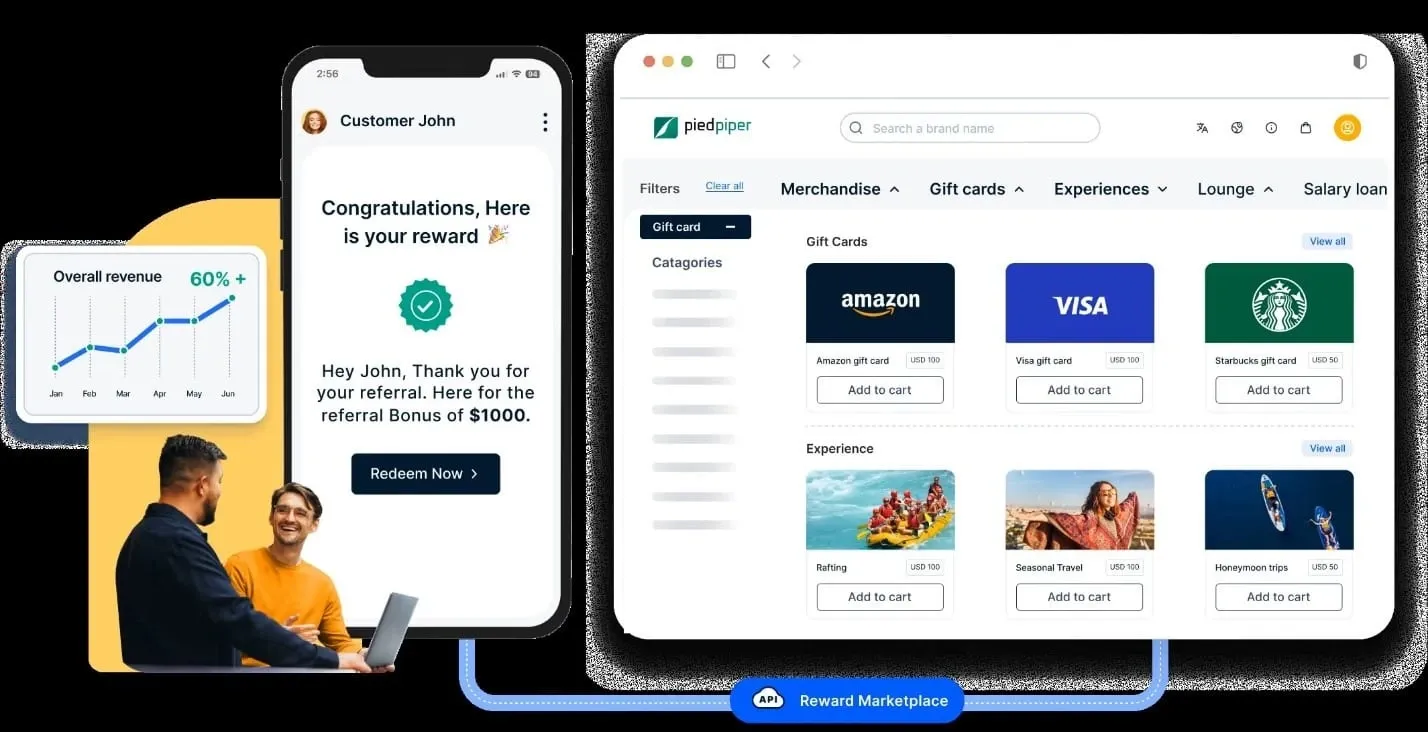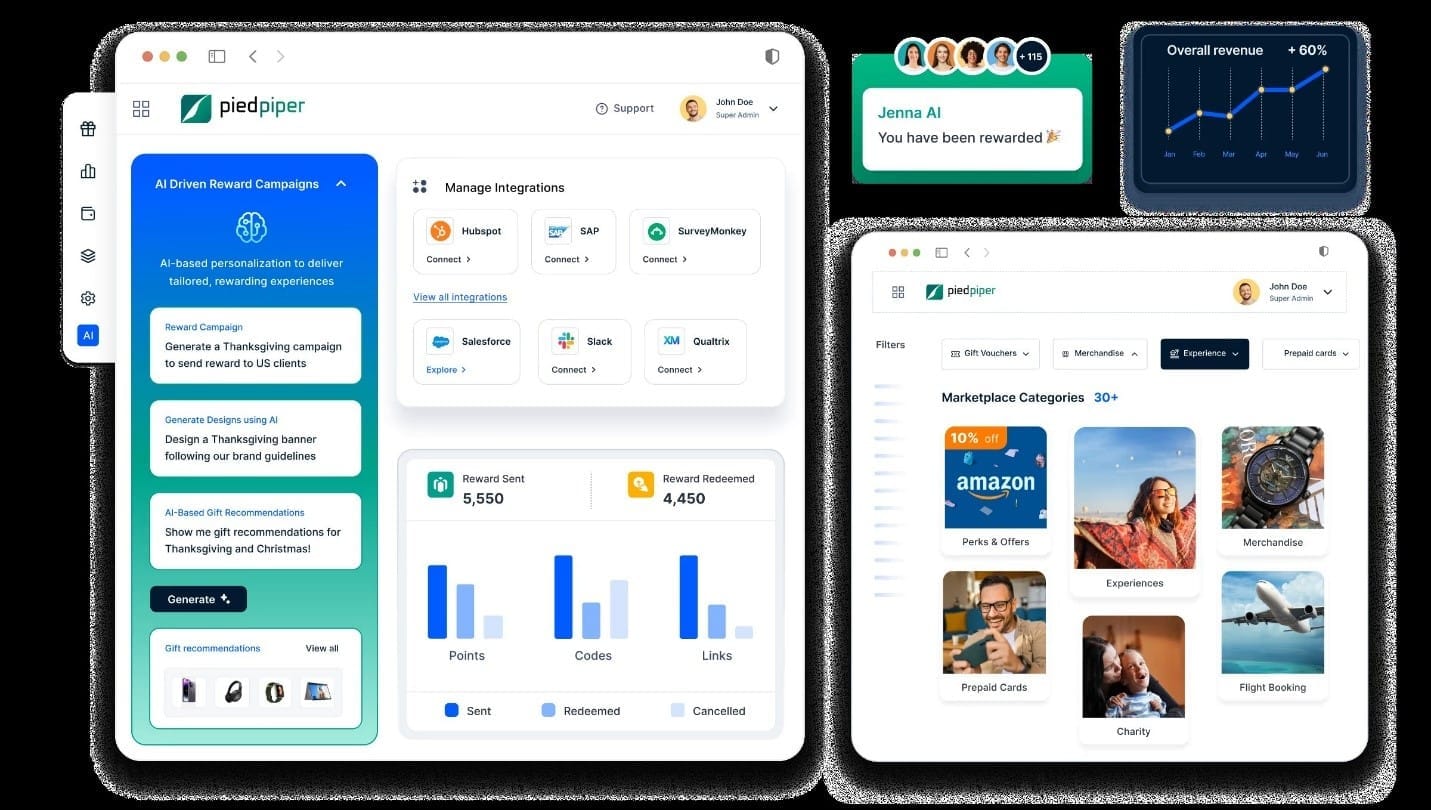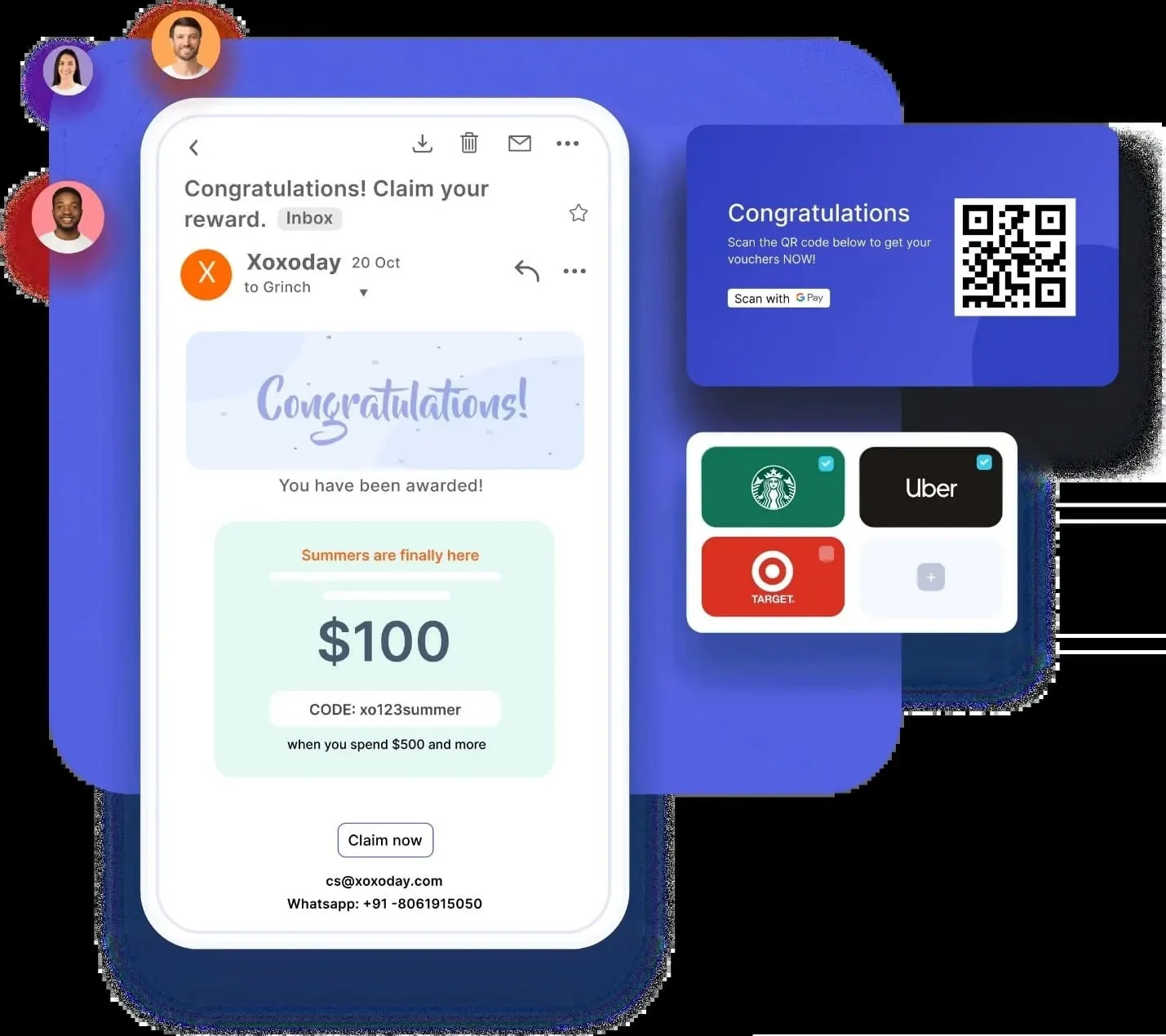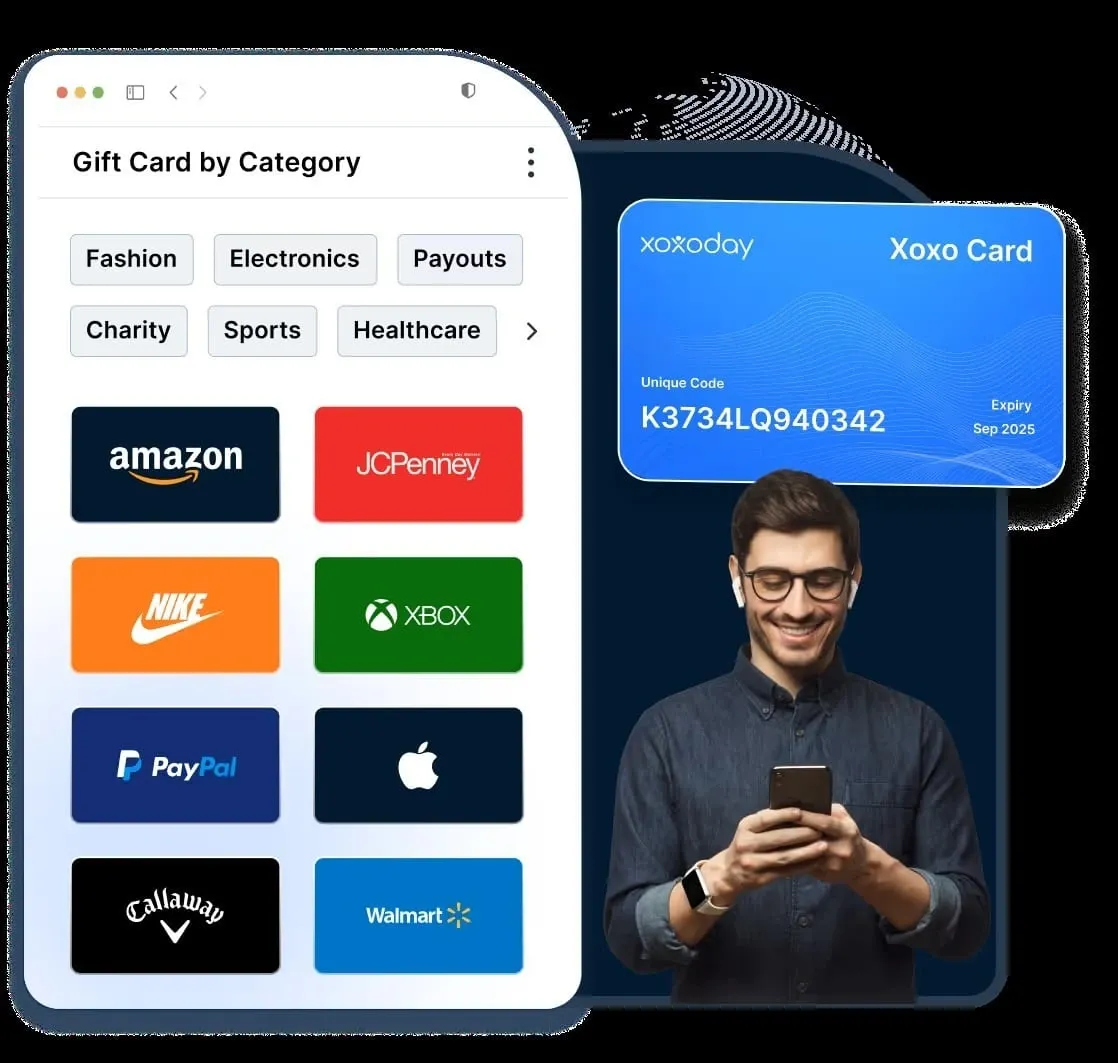Driving Customer Advocacy with Rewards
Customer advocacy fuels trust, boosts referrals, and drives business growth. This blog explores how to build an effective advocacy program using rewards that truly motivate—covering strategies, types of advocacies, and how platforms like Plum can help scale.
On this page
- What is Customer advocacy?
- Why is customer advocacy important?
- Types of customer advocacy
- How to build a customer advocacy program that actually works
- The right rewards strategy to power customer advocacy
- 3 strategies for building a customer advocacy program
- Turn loyalty into impactful advocacy with the right rewards
Making your customers into more than just purchasers - into advocates for your brand and products - is one of the best ways to grow your business. But it’s also very challenging to accomplish.
Turning your customers into spokespeople for your business can take many, many forms. But one of the most powerful ways to accomplish this is by offering them the right rewards. You can learn how to drive advocacy actions in this guide - let’s get learning!
What is Customer advocacy?
It’s a hot buzzword these days - but you might be left wondering what customer advocacy means. You’re not alone if you’re feeling a bit confused, as customer advocacy actually comes in two forms.
The first one is internal to your company - it’s a person whose role is to carefully study the needs of your customers and find strategies to satisfy them. They help to create great customer experiences by gathering feedback and implementing policies that proactively delight your customers.
The second form is external - a customer who has become an advocate for your company because they’re part of a customer advocacy program. They spread the word to their network of friends and family about how great your company’s products and services are.
These two kinds of advocacy seem separate, but they really aren’t - they work together. Your internal customer advocacy efforts help create very satisfied and highly loyal customers, who in turn join your program to advocate for your business because they are such big fans of what you do for them.
Why is customer advocacy important?
Given the widespread distrust of brands and advertising, customer advocates are key when it comes to building awareness and trust. Their efforts complement the work of your sales and support teams and make it easier for your brand to build relationships with new customers.
- Builds trust: People trust recommendations from friends and peers more than traditional ads. Advocates offer authentic, credible endorsements.
- Boosts customer acquisition: Referral-driven leads are often more qualified and convert faster than those from paid campaigns.
- Lowers marketing costs: Happy customers become organic marketers, helping you grow without spending big on ads.
- Improves brand reputation: Advocacy strengthens your brand’s credibility and encourages positive word-of-mouth.
- Drives loyalty and retention: Customers who advocate for your brand often feel more connected and stay longer.
- Differentiates your brand: In markets with similar offerings, great experiences and loyal advocates help you stand out.
- Increases lifetime value: Satisfied customers who refer others often spend more and return more frequently.
- Enables scalable growth: Advocacy programs scale as your customer base grows—turning every customer into a potential growth driver.
Types of customer advocacy
Here are the types of customer advocacy you should know about:
1. Social sharing
When customers talk about your brand on their social media channels—whether it's posting a review, sharing an unboxing video, or tagging your product in a story—that’s customer advocacy in its most visible form. These organic mentions amplify your reach and build trust with new audiences. Brands can strengthen this by using social listening tools to monitor mentions, jump into conversations, and respond in real time.
2. Reviews and testimonials
Customer reviews and testimonials are modern-day word-of-mouth. They build credibility and influence buying decisions far more than brand messaging ever could. Actively ask your customers to share their experiences, whether on your website, third-party review platforms, or video testimonials. Make it easy and rewarding for them to do so.
3. Referrals
Referrals take advocacy a step further. When customers recommend your product to friends, colleagues, or peers—and those referrals convert—it’s one of the most trusted and cost-effective growth channels. A structured referral program with attractive incentives (think discounts, loyalty points, or exclusive perks) can make sharing even more rewarding.
4. Speaking engagements
Customer advocates don’t just share their love online—they can also represent your brand in person. Invite top customers to speak at webinars, conferences, or industry panels. These real stories make your brand feel authentic and human, while also celebrating your most passionate users.
5. Customer advisory boards
Want deeper insights from your best customers? Bring them into the fold. A Customer Advisory Board allows you to regularly consult with experienced users who can provide feedback, suggest improvements, and share honest perspectives. This not only improves your offerings but strengthens customer relationships and loyalty.
How to build a customer advocacy program that actually works
Building a successful customer advocacy program requires careful planning and execution. Here are the steps to get started:
1. Start with clear objectives
Before diving in, define what success looks like for your advocacy program. Are you aiming to increase referrals, drive more user-generated content, or boost lifetime value? Setting measurable goals helps shape your strategy and track progress.

2. Know your ideal advocates
Creating detailed customer personas helps you understand who your best advocates are—and what motivates them. Use data to segment your audience so you can tailor rewards and experiences that truly resonate with each group.

3. Identify and engage loyal customers
Your biggest brand champions are already out there. Look at NPS scores, repeat purchases, social mentions, and enthusiastic feedback to find customers already spreading the word. Reach out personally and invite them to be part of something special—just don’t overwhelm them with too many asks.

4. Launch with intention
Once you’ve gathered your early advocates, launch your program with clear communication. Highlight what’s in it for them—exclusive access, recognition, rewards, and meaningful ways to engage. A customer advocacy platform can help automate tracking, rewarding, and measuring impact.
5. Track what matters
Keep tabs on metrics like referral volume, engagement rates, and conversions. Evaluate performance against your original goals and adapt your approach as needed. Regular reporting helps demonstrate the program’s ROI and guides future improvements.
6. Get company-wide support
Customer advocacy shouldn’t sit in a silo. Involve sales, customer service, and product teams to amplify impact. Support teams can surface happy customers, sales can deepen relationships, and product teams can use feedback to shape better experiences.
7. Design with scale in mind
Think beyond one-off campaigns. Build processes and tools that allow your advocacy efforts to grow with your customer base. As your program matures, introduce new layers—like gamification, tiered rewards, or community features—to keep advocates engaged.
8. Make listening a priority
Customer advocacy is a two-way relationship. Proactively gather feedback through surveys, check-ins, or social media engagement. Let customers know their voice is heard—and most importantly—act on their input to continuously improve the experience.
9. Create a space for connection
Build a sense of belonging by creating a customer community—online forums, events, or social groups where advocates can connect and collaborate. These shared spaces turn casual fans into passionate ambassadors who help each other and promote your brand organically.
10. Show your appreciation
A thoughtful thank-you goes a long way. Tailor your appreciation, some may love exclusive content, others may prefer recognition or small surprises. Whether it’s a handwritten note or a curated reward, personalized gestures strengthen emotional loyalty and keep advocates coming back.
The right rewards strategy to power customer advocacy
Rewarding your customer advocates is more than a nice gesture—it’s a strategic move that builds trust, strengthens relationships, and fuels long-term engagement.
While customer advocacy thrives on genuine enthusiasm, incentives help nudge customers toward consistent, visible actions like referrals, reviews, and social sharing. A well-designed reward system ensures your advocates feel valued and inspired to keep championing your brand.
The key lies in going beyond one-size-fits-all tactics. Generic discounts or gift cards may offer short-term results, but to cultivate true brand ambassadors, your rewards should reflect the depth of their involvement and interests.
Personalized, meaningful rewards help you engage different advocate personas—some may prefer recognition, while others are driven by exclusive access or social impact.
Here are some reward options for better customer advocacy:
- Digital gift cards – Digital gift cards are Instant, flexible, and widely appreciated across different demographics.

- Social sharing bonuses – Reward points for posting about your brand on platforms like Instagram, LinkedIn, or Twitter.
- Tiered loyalty perks – Exclusive benefits for top advocates such as early access, premium content, or invite-only events.
- Referral incentives – Cash bonuses, store credits, or discounts for every successful referral.
- Recognition-based rewards – Public acknowledgment, spotlight features, or customer stories on your brand channels.
- Experiential gifts – Tickets to events, personalized experiences, or access to exclusive learning sessions.
- Charity donations – Contributions made in the advocate’s name to a cause they care about.

3 strategies for building a customer advocacy program
Here’s a fresh take on strategies for building a customer advocacy program—focused on action, alignment, and authenticity:
1. Spot and activate your biggest fans using customer insights
Your biggest brand advocates are already in your ecosystem—you just need the right tools to find them. Use your CRM to track metrics like repeat purchases, high engagement, referral history.
Integrate alerts or tagging systems to flag potential advocates automatically. Once identified, engage them through personalized messages, program invites, or early-access content. Consistent, targeted communication is key to nurturing interest and turning them into active promoters.
2. Make advocacy valuable for them—not just you
Your advocacy program should be a two-way street. Offer value that aligns with your customers' personal or professional aspirations. That could mean exclusive access to beta features, public speaking or guest content opportunities, or entry into private user communities where they can build connections.
If you’re running a referral program, reward them meaningfully—think bonus points, storage upgrades, or monetary perks. When advocates gain recognition or growth from your program, they’re more likely to stay loyal and spread the word.
3. Use advocate feedback as a blueprint for better experiences
Advocates offer more than promotion—they offer perspective. Their feedback is a goldmine for refining your products and processes. Regularly gather insights via surveys, feedback forms, or community discussions, and then act on what you learn.
If they’re loving specific features or struggling with certain workflows, feed that information back to your sales, product, and support teams. Closing the feedback loop shows advocates that their input matters—and helps you build a brand they’re proud to support.
Turn loyalty into impactful advocacy with the right rewards
Customer advocacy is more than just a marketing buzzword—it's a proven growth engine fueled by trust, authenticity, and shared experiences. When real customers vouch for your brand, their voice carries more weight than any paid ad. But to truly maximize the potential of your most loyal customers, you need more than appreciation—you need a strategic, well-designed reward system.
By integrating meaningful, personalized rewards into your advocacy program, you not only thank your customers for their support but also inspire continued engagement, deeper loyalty, and stronger referrals. Whether it's rewarding reviews, incentivizing referrals, or celebrating brand champions—rewards turn appreciation into action.
That’s where Plum comes in. With seamless integrations, a global reward catalog, and flexible automation, Plum empowers you to scale customer advocacy like never before. From gift cards and experiences to donations and tiered loyalty perks, you can reward advocates in ways that truly resonate.
Ready to turn happy customers into your most powerful growth channel? Book a free demo and make advocacy your next big win.


















